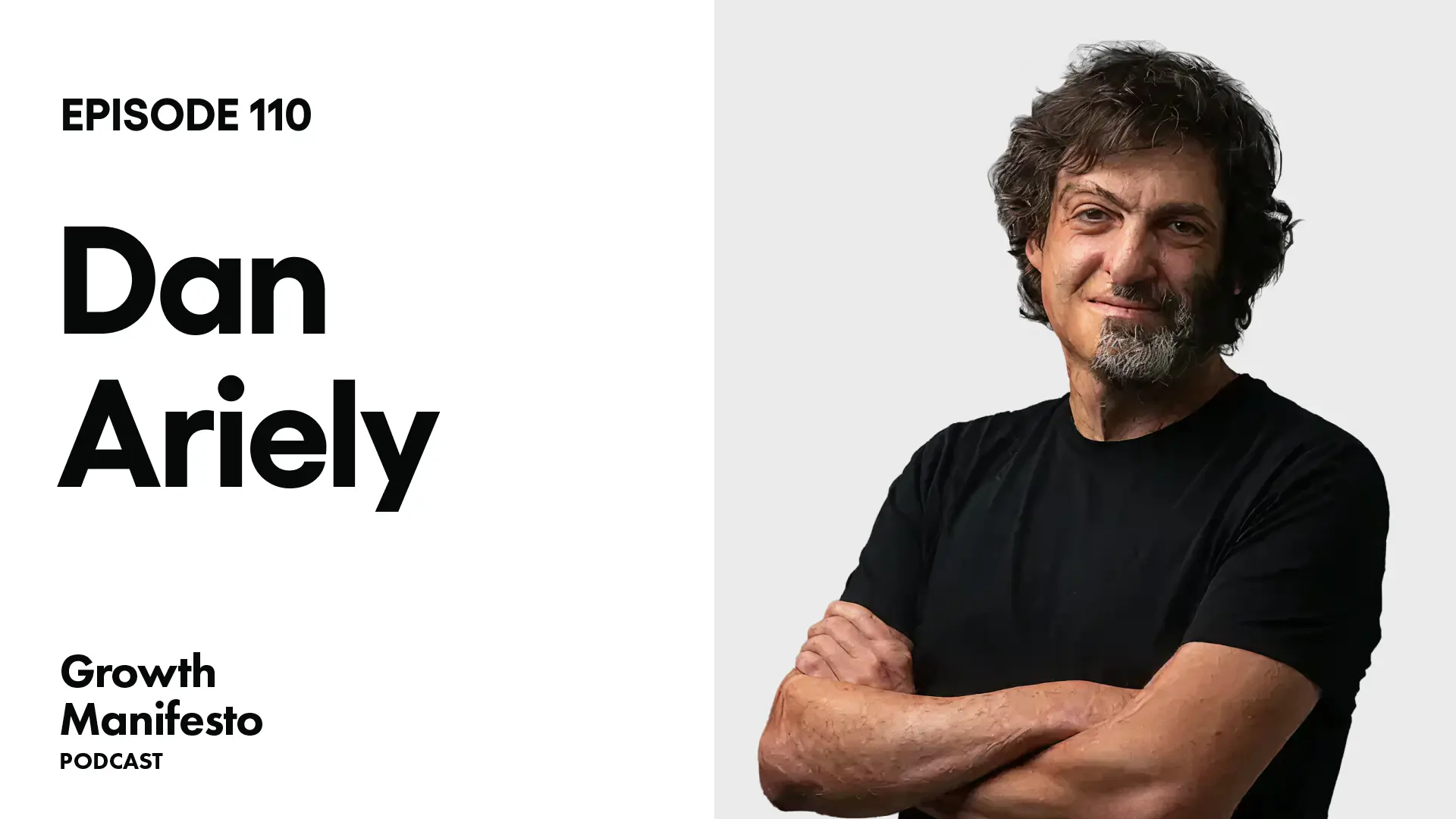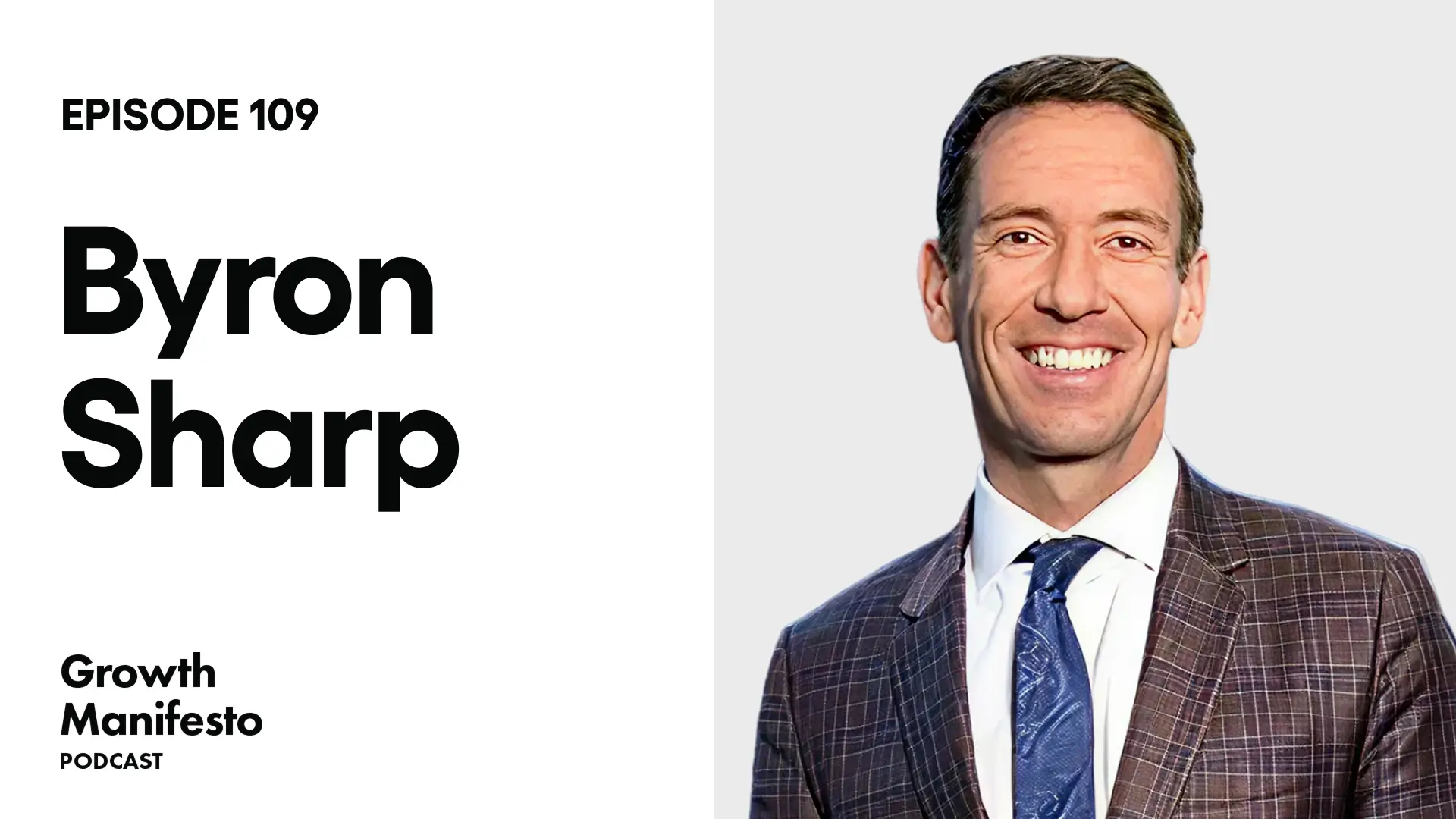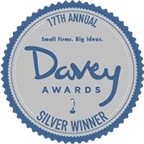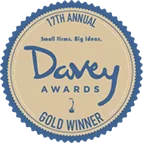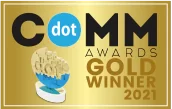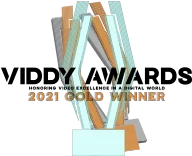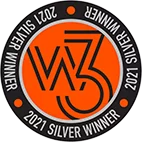How Grayscale became the world’s largest asset manager for digital currencies
This episode is with Michael Sonnenshein – CEO at Grayscale Investments, the world’s largest asset manager for digital currency with more than $40 billion assets under management. In this episode we talk about how to build a market-leading investment fund.
LINKS
—
You’re listening to The Growth Manifesto Podcast, a Zoom video series brought to you by Webprofits – a digital growth consultancy that helps global and national businesses attract, acquire, and retain customers through digital marketing.
Hosted by Alex Cleanthous.
- YouTube: https://www.youtube.com/c/GrowthManifestoPodcast
- Instagram: https://www.instagram.com/webprofits/
- LinkedIn: https://www.linkedin.com/company/web-profits/
- Facebook: https://www.facebook.com/Webprofits/
- Twitter: https://twitter.com/webprofits
- Agency: https://www.webprofits.io
SHOW NOTES
- 00:01:22 Michael Sonnenshein’s introduction to the Growth Manifesto Podcast
- 00:02:09 Can you give a quick overview of Grayscale?
- 00:05:06 How was it like when Grayscale initially launched?
- 00:10:29 What was the first big challenge when you first started Grayscale?
- 00:13:15 What was it like converting the fund before? What was your approach?
- 00:15:24 When did people start coming in to invest on their own instead of you approaching them?
- 00:18:15 How did you get through during the early years of Cryptocurrency?
- 00:20:28 What happened to the business that led you to start the second fund?
- 00:22:31 How much harder or easier to launch the second product compared to the first one?
- 00:24:16 What is the process of transitioning to exchange trade funds right now?
- 00:29:34 What is your approach or strategy?
- 00:31:19 What are your considerations in choosing the next product?
- 00:33:48 What does a typical week look like for you?
- 00:36:30 What time do you wake up in the morning?
- 00:36:54 What is your best advice for people who are interested in launching an investment fund?
- 00:37:44 If you ever start again, what would you have done differently?
- 00:39:23 Where do you see bitcoin and ethereum in 2 years?
TRANSCRIPT
Michael Sonnenschein:
You know, Bitcoin is something that could potentially change the world or create financial inclusion. And when I met Barry, I don’t know that I’d ever had a conversation with somebody that had really, really taken a deep dive, or even used phrases like, change the world, or reconstitute our concepts of money, or how value moves around the world, and I was completely enamoured by the opportunity. I would say, through the lens that we look at the world, the crypto ecosystem has continued to mature and continued to evolve, and we have remained committed and unwavering in the fact that we will be converting GBTC into an ETF.
We believe wholeheartedly that this product is not only the world’s largest Bitcoin product, it holds about three and a half percent of the outstanding Bitcoin flow. It trades hundreds of millions of dollars a day. It’s already an SEC reporting company. We think it is, of course, and remains only a matter of time. It’s a matter of when, not a matter of if, this is able to convert to an ETF, and that’s going to be a day that we will all celebrate with a lot of excitement because it’ll be many, many years in the making to get there.
Alex Cleanthous:
Today we’re talking with Michael Sonnenschein, CEO at Grayscale Investments, the world’s largest asset manager for digital currency, with more than 40 billion assets under management. Today we’ll be talking about how to build a market leading investment fund. Just quickly before we get started, make sure to go ahead and hit that subscribe button so that you get the latest episodes as soon as they are released. Let’s get into it. Welcome, Michael.
Michael Sonnenschein:
Thank you so much for having me. I’m really excited to have this conversation.
Alex Cleanthous:
Yeah, me too. Especially because you’ve seemed to have managed to bridge the gap between the Bitcoin industry and the investment industry. This is going to be a conversation about kind of like your journey, success, and how you think about investing because you’ve achieved some awesome things. But for those people who don’t know Grayscale, would you give a quick overview of what you do?
Michael Sonnenschein:
Absolutely. So Grayscale, as you mentioned, we are the world’s largest digital currency asset manager. And that’s a lot of words, so let’s unpack what that means. We are an asset manager, which means that we offer products that allow investors to make certain investments. It just so happens that rather than focusing on stocks, or bonds, or commodities, or foreign exchange, our focus is entirely on digital assets.
So that journey for us began in 2013 when we launched our first, and what remains our flagship product, the Grayscale Bitcoin Trust. Today, as you mentioned, we have 15 different investment vehicles and about $45 billion of assets under management. What does that really mean? It means that we were early to identify that investors would want access to digital currencies, assets like Bitcoin, Ethereum, and Litecoin, and I’m sure quite a few others that folks have heard of or perhaps have even considered investing in. And we realised that because digital currencies have certain attributes that may make them tough to figure out where to buy them, or how to hold them, or transfer them, or safe keep them, well, maybe we could be the conduit to help a lot of investors get access to this ecosystem, but do so in a way that really felt familiar and comfortable for them. And so we’ve packaged digital currencies into investment vehicles.
And that’s not new, right? Investment vehicles exist for gold, for oil, for subsets of the investment universe, healthcare stocks, energy stocks, you name it. And so Grayscale has really been a really big catalyst for many investors, whether they are retail investors, or even institutions who want digital currency exposure as part of their investment portfolios but maybe don’t either have the legal or operational wherewithal to buy digital currencies or hold digital currencies directly.
Alex Cleanthous:
Which is the majority of the market. You started the fund back in 2013, when the price of Bitcoin was $200. It’s now… $46,600 US?
Michael Sonnenschein:
Yeah. So I don’t know how quickly this conversation will be out in the market-
Alex Cleanthous:
I know.
Michael Sonnenschein:
… but we launched the Grayscale Bitcoin Trust in September of 2013. Speaking with you today in September… Actually, what’s today’s date? Oh, wow. We are almost coming up on the eighth anniversary of the launch of the product. We have come quite a bit from those original early days of just focusing on Bitcoin, and now our products span over a dozen different and digital currencies, so been an exciting journey over the last eight years.
Alex Cleanthous:
But what was it like to launch back then? Because in 2013, there was kind of hardly… The conversation around the digital space was at the very early stages, right? This is before the mainstream started to get into it. So what was it like trying to create an investment fund and to get people on board for something that just had the promise back then? I’m sure it’s easier today just depending on the date of having a look at the funds under management for Grayscale. 30 billion, then it’s 40 billion, now it’s 45 billion. It’s very, very different today but how was it like in the beginning?
Michael Sonnenschein:
Let me talk you through what that journey has kind of been like. Number one, I unfortunately missed day one of Grayscale. Our founder is a gentleman named Barry Silbert. He started the fund in September, 2013, I joined him in January of 2014. So just a couple months.
Alex Cleanthous:
Three months.
Michael Sonnenschein:
Yeah, exactly. So I’ll take you back to then. I left traditional banking. I was working at a bulge bracket bank, actually I worked at three different bulge bracket banks, and then was looking for my next career move, and got very excited by the opportunity within digital assets. Thinking about Bitcoin is something that could potentially change the world or create financial inclusion. And when I met Barry, I don’t know that I’d ever had a conversation with somebody that had really, really taken a deep dive, or even used phrases like, change the world, or reconstitute our concepts of money, or how value moves around the world, and I was completely enamoured by the opportunity.
And when I originally joined, my role was really to spearhead our sales effort. We had about $60 million of assets under management, and, again, just that one product, Grayscale Bitcoin Trust, so that’s just a passive Bitcoin strategy. And over the years I continued to take on more and more responsibility, and ultimately became CEO of the business at the beginning of 2021.
But how conversations have changed over the last eight years, some of the things that have transpired are things I wouldn’t have even imagined. In 2013, I think maybe the only people that were talking about Bitcoin, and into 2014, were really, really wealthy entrepreneurs. A lot of folks that were primarily around the technology scene and the software scene. This was coming up in social gatherings, dinner parties, things like that. I think in late 2014 and throughout 2015 and ’16, we started to really engage more so with family offices. So again, starting to see a little bit of a ground swell from retail investors, but mostly larger capital was coming from very wealthy families, who if I really think about what their motivations were, they were excited by the technology. I think they were realising that there was an opportunity, a risk-reward scenario that maybe didn’t exist elsewhere. And then also given how small family offices are, once they have conviction in something, they could actually make an investment pretty quickly.
But I think it wasn’t until 2017 when Bitcoin kind of broke out to that new all-time high. Prior to then the highest Bitcoin I think had ever been was probably around 1,200 some odd US dollars, and when it broke out beyond that, I think that’s when it really started to capture the hearts and minds of institutions. There were starting to be the development of some really interesting trading tools. So indices were starting to get launched, accessibility started to open up. And I think for us and a lot of other folks, there started to really be this conversation around institutional adoption of digital assets and what is it going to take to get institutions involved with digital currencies.
And I think that’s only continued to unravel. As I speak to you today, you now have Fortune 500 companies that own Bitcoin on their balance sheet. If you’d asked me that five years ago, you could have even asked me that 12 months ago or 18 months ago, I’d probably tell you that would be long off. It would not happen so quickly. In the emerging markets you have countries like El Salvador that have now declared Bitcoin as legal tender. I mean, you really, really have started to see massive participation in this asset class on a global level that has really solidified its staying power. And despite all the progress, despite all the growth, and even just the growth at Grayscale, which we are of course super proud of, I got to say, I cannot characterise enough for anyone watching or listening how early days the entire thing still feels.
Alex Cleanthous:
Because it’s kind of like the internet. Back in 2004 or 2005 I started to market on the internet and I thought I had missed the wave because everything was like in the ’90s and the dot.com, the boom and the bust. The cryptocurrency industry is still at that kind of early stage and so lots of people still feel like they have missed out because as of today it’s around $47,000. And so there’s a lot of change happening right now. So what were some of the earliest challenges? Because you had to get the funds first before you created the trust to list or you listed first. So what was the first big challenge of actually launching this thing?
Michael Sonnenschein:
Well, I’ll start out by saying that there is no handbook, there is no guidebook, there are no cliff notes for how to launch these funds, particularly when it comes to digital assets. We’ve created products now around a totally novel technology. It’s not securities, these are not commodities, these are not FX. And so I think really the power of the way that we’ve built our business really has been leveraging some outstanding service providers obtaining some fantastic legal advice and really never losing sight of what’s most important to us, which of course is our investors, and ensuring that we’re taking all the proper precautions.
But we’ve definitely had to face a lot of, not only challenges, but it actually says we’ve really been the pioneers that have actually set a lot of the industry standards. So that’s been things like, really trying to ensure that anyone that we may work with for custodying digital currency, underpinning our products are folks that adhere to certain standards and have certain kinds of reporting, disaster recovery, certain other kinds of redundancies and security measures in place. We’ve had to really work proactively with auditing firms. For them, auditing different kinds of assets was certainly not something that was new to them, that may be a little less traditional, but they certainly didn’t have the familiarity or the comfort with digital currencies and perhaps how to audit those. And so that’s been another area we’ve really had to partner and kind of pioneer some of those conversations and practises.
And I really think underscoring all of what I’m sharing is that we as a firm have always taken a measured approach to what it is that we do. We are definitely a ask for permission not for forgiveness kind of organisation, but we do it in a way where, because we recognise the goal that we play, it’s always been important to us to really educate the people that we’re working with and really partnering with them to try and achieve that agility that is obviously really, really important to operating our products.
Alex Cleanthous:
Okay. That sounds very complex, which is probably why it took four years or two to four years to really start to gain traction. You said you started to gain some real traction in 2017.
Michael Sonnenschein:
Mm-hmm (affirmative).
Alex Cleanthous:
What was it like promoting the fund before that point? How did you approach it?
Michael Sonnenschein:
Well, I think for a lot of investors they’ve really been able to find different reasons why this as an investment resonated with them. I think certain investors saw Bitcoin as a digital gold or a digital store of value, so it may be able to fit in their portfolios as a replacement or a partial replacement for assets like gold or other assets they may own as an inflation hedge or a applied to safety asset so that their portfolios are protected when markets are turbulent.
I think other investors may have been excited about the underlying blockchain technology. This was a kind of a pure play for them and they believed in the inextricable tie between Bitcoin itself and the underlying technology, and that owning exposure to Bitcoin would be a more liquid way to, I guess, execute on that kind of a thesis. I think certainly many investors have long believed that Bitcoin is a new form of money, a new way that value moves. Maybe a displacement or a replacement of certain mechanisms that we use today to move value around the world. And so I think kind of depending on the type of investor that we were dealing with and certainly the types of investments that they are historically comfortable making, we were able to kind of find usually the right analogy or the right set of circumstances that would get them excited about it.
And at the same time continuing to reinforce education and doing everything we can to dispel any of the kinds of myths that may be out there around the asset class or any beliefs that kind of bubbled up to the surface that we knew in fact to not be true as well.
Alex Cleanthous:
So in the beginning, and this is across like a lot of organisations, it’s all outbound, like it’s all just knocking on doors and stuff and trying to start these conversations. When did the tide change where people started to come to you instead of you having to go to them?
Michael Sonnenschein:
Well, I think a lot of that did start to occur really in 2016, 2017. For a long time we were operating Grayscale at a loss, and when we started to get to a significant size, we had no hesitations, prior to earning a profit, running the business, investing in the business, but certainly when we were able to turn the corner and start to achieve profitability it started to open up the potential for us to have extra capital that we could really emphasise our brand and lean into things like advertising and partnerships. And so being able to get the word out there about the opportunities that Grayscale offered investors certainly allowed a lot more investors to come to us as opposed to us having to kind of do outbound sales work as heavily.
But I think to one of your earlier questions, something that has also been pretty pioneering about Grayscale is the fact that we have historically and continue to launch each of our products as a private placement. So these are generally soliciting investments primarily to accredited investors. So high net worth individuals, family offices, hedge funds, endowments, pensions, you name it. And we’ve done something that’s been pretty novel. But again, asking for permission, making use of existing securities laws and regulations, which is that we moved to have those private funds actually pushed out into the public market. And so we now have six different products so far out of the 15 products that also trade on the public market every day. And so whether you’re here in the US, or you have access to the US securities market from other parts of the world, investors have the ability to also participate in Grayscale products right in their brokerage accounts, retirement accounts, you name it.
And certainly the success and the receptivity of these products in the public market, I think it has also been a really big catalyst for us that’s also allowed us to create a larger ground swell and also increase our investor base. So that’s also been something that we’ve looked back on historically that’s been a big part of our business.
Alex Cleanthous:
Yeah, which is fantastic. I think what’s interesting is, today, a super successful company, and everyone would just look at you and go, “Wow, they are so lucky. They invested in Bitcoin back in 2013 and started this big thing,” and people just don’t understand the challenges of those early days. To run at a loss for that many years, there must be a commitment, a focus on there’s something here, there’s something that’s bigger. And so how did you get through those kinds of early years? Because it’s so easy now when… Well, it’s not easy now just to be very, very clear, but it’s so much harder starting out. So how did you get through those early years?
Michael Sonnenschein:
Well, I think certainly we as a team developed a very thick skin and an iron stomach pretty early on, because you of all people and anyone listening or watching knows that digital currencies and Bitcoin as well certainly are no stranger to volatility. And so whether it was price movements that could have shaken people out or caused them to have their conviction begin to waiver, or it was the narrative. The early days of this asset class, and even still today. It’s been challenging for companies to get even bank accounts, or even just kind of simple services to really just help operate their businesses. The early days of crypto and Bitcoin, we were having to do a lot of work to dispel a lot of the narratives that this was for laundering money or for illicit activity.
Michael Sonnenschein:
I mean, those are the kinds of things that certainly were easily sensationalized in the news and that people could easily get carried away with, but if you actually do the work and educate oneself, and again, that’s why we are so committed to that aspect of what we do, you very quickly learn and realise that some of those narratives are so false because these are some of the worst, worst mechanisms possible for doing anything the least bit nefarious. And in fact, this is truly the largest and most innovative consensus mechanism the world has ever had, and we certainly think that, again, we are in early, early days of seeing the use cases that can be built on top of these technologies, including digital currencies, are probably just the beginning.
Alex Cleanthous:
The next one that you launched was Ethereum in 2017. That now has over, well, of course I had a look online, it’s set around like $10 billion under management. I’m not quite sure if that’s increased because it changes so much these days. That’s what happened basically in the business that led to launching the second fund now. Because you’ve got the first one, it’s now hitting something and now you’re like, cool, okay, so now we are going to launch the next one. So what happened in the business to start that?
Michael Sonnenschein:
Well, we have a really interesting seat within the digital asset community. Grayscale is a wholly-owned subsidiary of a company called Digital Currency Group, and so sitting where we do within the community really allowed us to have a front row seat to a lot of the entrepreneurs, a lot of the businesses, and a lot of the projects that were being developed in the industry. And so things like Ethereum and other assets as they came along were pretty quickly floated onto our radar pretty much in their infancy. And I think we as a team have always towed that line. And there’s kind of a healthy tension there, Alex, right? What is it that investors want and where do they want to deploy capital? And simultaneously, well, we as a team at Grayscale, what are we uniquely positioned to kind of unearth or find for investors? Investigate those opportunities and bring those opportunities to them.
And so I think with every product we’ve launched, whether it was Ethereum, or Litecoin, or any of the other funds that have come into the market, we’ve always kind of had to balance those two aspects, and also really stick true to those principles that I spoke to, where we have to do our deep dive from a legal and regulatory perspective. We have to figure out where price discovery is. We have to see if service providers can properly serve and work closely with us on ensuring that we are always acting in the best interests of our investors and operating these products the way that they are intended to.
Alex Cleanthous:
And so you’ve launched another, if I am correct, because you said like 15 products now, because I had a look online it was 12 but I think there’s more now. You change so much. That’s the first thing that’s really interesting about this space, but how much harder or how much easier was launching the second and the third and the fourth product compared to the first one?
Michael Sonnenschein:
It’s a good question. So I would say for a while, a lot of the products we were launching were single asset products. So each of the products was just solely and passively invested in one currency. So certainly as we kept rolling out more single currency products, we not only began to learn some lessons along the way and smooth out some speed bumps, but we also were able to get them into market faster and continue to kind of replicate on the success of the previous products we had launched.
I’d say one of the first really big challenges for us was when we really decided it was time to launch a different kind of product, a diversified fund, where the fund would be legally structured as something different, as well as own multiple assets in the fund as opposed to just a single digital asset. All packaged within a single security, a single investment offering. And so that was certainly an exciting opportunity for us, and that is when we launched our Digital Large Cap Fund. Our fund that really helps investors make a singular investment but get that broad based perspective, that broad based exposure to the asset class.
Alex Cleanthous:
So it’s easier but there are still challenges, and there’s like the different styles of products that are being created, which is really interesting, right?
Michael Sonnenschein:
Indeed.
Alex Cleanthous:
So it still has it’s challenges but you’ve got a few more processes now and a bit of a track record and a bit of history so that probably a fraction easier than those first three to four years. You talk about transitioning to exchange-traded funds now, because at the moment it’s trusts that then list on the stock exchange. But there’s all this, the ground swell that is starting to hopefully move towards exchange-traded funds. What’s the process there right now? Because obviously it’s in extremely early stages right now.
Michael Sonnenschein:
Sure. I don’t know if I’d call it early stages. It’s certainly not for us at Grayscale. I mean, we’ve been working with our regulator here in the US, the SEC since 2016 hoping to convert our products to ETFs. I think certainly the first candidate for becoming an ETF would be our Bitcoin product, our ticker GBTC, the Grayscale Bitcoin Trust.
Now I think what’s been interesting about this conversation is we’ve certainly had a very favourable reception from the SEC to have conversations around exchange-traded products. However, over the last few years they’ve certainly denied some applications that have come before them and they’ve cited that there’s a couple aspects of the underlying market for Bitcoin that perhaps give them some pause. Things like, there not being enough surveillance of the market, or significant regulated sizes of markets, things of that nature.
We seem to be perhaps at a little bit of a turning point. We have a new chairman at the SEC, and over the last couple weeks he’s actually publicly provided some commentary that does maybe suggest that he and the SEC staff have now become a little bit more resolved with some of those previous concerns, given that they’ve kind of waved in, publicly, the fact that they’d like to look at some of these ETF applications again.
The distinction that we are seeing now in the market, which is causing a stir within the investment community, is that the SEC seems to be calling out a willingness or a desire to look at Bitcoin ETF applications but those that seem to be based on Bitcoin futures without really speaking at all on whether or not they are interested in looking at Bitcoin applications for ETFs that are physically backed, the way that GBTC and many commodity based products are today.
And we think this is a really important, important point that we really want to stress because the SEC is a disclosure regulator. They are really here to protect investors and make sure that as investors go to the market, make investments, utilise products, ETFs and otherwise, that all the right risks are disclosed so that investors are making fully informed investment decisions. And so it would create, Alex, an unfair or an unlevelled playing field if the SEC were to only approve futures based Bitcoin products without also creating the ability for spot or physically backed Bitcoin ETFs to come to the market at the same time.
And instead, this is a decision that we really think should be up to investors. If you look at assets like gold, there’s gold ETFs that hold gold then there’s gold ETFs that hold gold futures. And if you have those both in the market, then investors can really choose which product really fits their needs best rather than having the regulator be the one to focus on which product may or may not be more appropriate for investors.
Alex Cleanthous:
It just seems like it’s a matter of time right now. It seems like-
Michael Sonnenschein:
Oh, certainly. And again-
Alex Cleanthous:
… the momentum is there, it’s just how long now. What’s left really to do?
Michael Sonnenschein:
I don’t know. I would say, through the lens that we look at the world, the crypto ecosystem has continued to mature and continued to evolve, and we have remained committed and unwavering in the fact that we will be converting GBTC into an ETF. We believe wholeheartedly that this product is not only the world’s largest Bitcoin product, it holds about three and a half percent of the outstanding Bitcoin flow. It trades hundreds of millions of dollars a day. It’s already an SEC reporting company. We think it is, of course, and remains only a matter of time. It’s a matter of when, not a matter of if, this is able to convert to an ETF, and that’s going to be a day that we will all celebrate with a lot of excitement because it’ll be many, many years in the making to get there.
Alex Cleanthous:
Yeah. And if we can look at companies like Vanguard and how much they actually have now because of the fact that they are like an ETF, this is going to be huge for Grayscale, so that’s very exciting for you. I wish you all the best to accelerate that process.
Michael Sonnenschein:
Thank you.
Alex Cleanthous:
You did mention you hold three and a half percent. See, again, last time I looked it was about two and a half percent, but you had about three and a half percent of all the Bitcoin. What’s your approach in the trust? Is it to buy and hold? Is that the strategy?
Michael Sonnenschein:
Correct, yeah. The Grayscale Bitcoin Trust is a passive product, so any money that is deployed into the fund itself is used to buy Bitcoin. There’s no synthetic exposure. The fund doesn’t even hold a penny’s worth of cash. So for investors who are looking for Bitcoin exposure but don’t want to set up a wallet or figure out how to buy Bitcoin directly, and who also may want Bitcoin exposure alongside stocks, bonds, ETFs, their retirement account, whatever it may be, this is a pretty seamless way to get that exposure right alongside those other investments.
Alex Cleanthous:
And is there a limit to how many Bitcoin the trust can hold? Like in terms of the market size, in terms of the Bitcoin circulation?
Michael Sonnenschein:
It does call into a good question. I think one of the things that has and continues to make Bitcoin investible is the fact that it is a scarce asset, a verifiably scarce asset. There are 18 plus million Bitcoin in circulation today, we know that there will only ever be 21 billion Bitcoin ever created, and so certainly that would be a very good problem to have if the product ever crept up against any number that flirts with the outstanding Bitcoin float or outstanding Bitcoin supply. But certainly we are not near that at the moment.
Alex Cleanthous:
And again, that’s one of those good problems to have.
Michael Sonnenschein:
Correct.
Alex Cleanthous:
You have another 14 products and you invest in companies like the Basic Attention Token and Decentraland and so on. How do you choose the next thing? Because you’ve got such a good start, now feels like the pressure of choosing the next thing is really, really important. So what are some of your considerations in the next product or the next digital earthy currency?
Michael Sonnenschein:
Sure. Well, again, I think we tow that healthy line between identifying unique opportunities and also listening to investors around what they want. We try to be as transparent, Alex, as possible about this process. So we consistently maintain a list of assets that we are always considering to go inside our investment products on our website so that investors are never surprised or caught off guard by some of the assets that we may be exploring for consideration. It does not mean that every asset that is on that list will make its way into a Grayscale product but at least we are trying to signal to the investment community the areas of the market that we are investigating, and sometimes that invites people to share resources with us, share opinions with us, get feedback. But ultimately when we think about products to launch, there certainly has to be a market fit. We want to really drill into the use case for a given digital asset. Is this a solution in search of a problem or does this actually have some real world application or utility?
We’re looking at some pretty basic things as well. We’re looking at the underlying integrity of the blockchain that underpins this asset. Is it stable? Where does price discovery happen? What are some of the legal considerations around a given asset? How is it launched? Who controls it? We look at things like supply dynamics. Has all of the float for a given currency been put out there? Is it coming online? How does it come online? Where are the assets held? The list candidly goes on and on. It’s a pretty exhaustive process that, thankfully, is a very cross-functional procedure that we undertake as we evaluate assets for inclusion and products that span operations, finance, legal, research, you name it. It’s a team wide effort to say the least.
Alex Cleanthous:
That’s an amazing answer because you answered all of my follow up questions in that one answer, so that’s a very good answer. Thank you for that.
Michael Sonnenschein:
Thank you.
Alex Cleanthous:
Awesome. So what does a typical week look like for you now? Because there’s a lot of stuff going on with products, with interviews like this, and then you’ve got all the regulators, and sales, and client relationships. So what does a typical week look like for someone like yourself? Because you’re in a really interesting position.
Michael Sonnenschein:
Yes. When I have my CEO hat on, it’s first and foremost about my investors that are entrusting us with their assets. So making myself available to engage with our investors, answer their questions, and be a resource for them. With my CEO hat on, it’s certainly next about my employees. We are a growing team and we have created, I think, a really, really unique culture. One that I would characterise as being inclusive and deliberate and really trying to pull people into the company that are probably trying to break ties with the traditional financial system, kind of taking the best of those experiences to Grayscale. And so my day is riddled with meetings, and calls, and brainstorms, and whiteboarding sessions. I tend to be pretty hands-on, and of course try to be as accessible and have as much of an open door policy as possible.
But yeah, there are constant interviews, press, TV, launches. We’re making a big focus on investing in our brand, investing in technology, recruitment, interviewing and working closely with all of our service providers. I think an interesting aspect about Grayscale is that we’ve been able to grow quite quickly, but do so with a pretty lean salesforce and a pretty lean team. We’re only about 40 odd employees today, which is relatively small given the size of our AUM, and so that really underscores, I think, the kind of partnerships and commitments and working relationships we have with our service providers.
Typical days are certainly not 9:00 to 5:00. I won’t venture to guess what my typical working hours are, but certainly outside of that when I’m able to take off the CEO hat and recharge the batteries, certainly spending time with my wife and family and friends comes right to centre stage. Get back up and kind of do it all again the next day.
Alex Cleanthous:
This is just a quick question just for myself. What time do you wake up in the morning, just out of interest?
Michael Sonnenschein:
I could be waking up at 5:00 or I could be waking up at 7:00. Every day is going to be very different.
Alex Cleanthous:
Got it. That’s just something which I’m just interested in personally. A couple more questions and then we’re done. First one is, what’s your best advice for people looking to launch an investment fund?
Michael Sonnenschein:
My best advice for someone launching an investment fund would be to probably ensure that they are surrounding themselves with really, really trustworthy legal advice. When you think about anything that has to do with investments, raising money, investor protections, disclosure, et cetera, I cannot underscore enough the importance of having really, really sound legal advice. That can be done in-house, that can be done with external parties as well, but I think that that is probably core to being successful or at least setting oneself up for success when launching a new fund.
Alex Cleanthous:
Thank you for that answer. If you had to start again, would there be anything which you would have done differently?
Michael Sonnenschein:
That’s a great question. No journey is perfect. Well, I would say this. I’d say pre-pandemic, I was probably spending about 50% of my time on the road. And while I look very, very favourably upon those experiences, events, dinners, people I’ve met, places I’ve been, and feel very fortunate to have had a lot of those experiences, certainly the degree to which I and my team as a whole have been productive throughout the pandemic in a safe and responsible way using electronic means has been really, really enlightening. And so perhaps I wonder, all the hours I spent in airports and on planes and things like that may have perhaps been better served doing other things. Maybe that’s a lesson we all could have learned a little bit earlier but of course it is unfortunate that that’s a lesson we would have had to learn from a global pandemic.
Alex Cleanthous:
I think that’s a fabulous answer, and I think that’s something that there’s quite a lot of organisations that are actually starting to see right now, but before that was the expectation. It’s really hard to go against the expectation when everyone expects the meetings, and the handshakes, and lunches, and the dinners, and all that type of stuff. It’s been super interesting to see how the world has shifted the paradigm around the business side of things.
Alex Cleanthous:
Last question, and I’m sure this is one that everyone asks you. Where do you see the price of Bitcoin and Ethereum in two years time? I have to ask you.
Michael Sonnenschein:
Yeah, you do.
Alex Cleanthous:
I would be amiss if I didn’t ask.
Michael Sonnenschein:
I’m going to couch my answer in the following. I think both Bitcoin and Ethereum as assets are here to stay, and I see that based on the kind of the signals that I’m seeing in the market and who’s participating in this market. All that being said, it would be very difficult to pinpoint where Bitcoin or where Ethereum will be in the future from a price perspective. Certainly for an asset like Bitcoin, which is verifiably scarce, it’s simple supply and demand. If the asset is scarce and the supply is constrained and demand continues to grow, basic economics would tell you that the price of the asset would increase over time.
I personally continue to buy more of these assets daily. That’s just the degree to which I personally have conviction. That being said, I can’t underscore enough that digital currencies are volatile. We’re only about a decade plus into the journey of their life cycle, and so the same way that not every investment under the sun is appropriate for every investor, that also means that for every investor of digital currencies aren’t necessarily appropriate. But I am certainly optimistic about the road ahead for digital assets more broadly.
Alex Cleanthous:
I love that you didn’t answer my question but that you are being completely legal right now. So it’s not financial advice to be very, very clear, but look, I had to ask the question. So for the listeners who want to invest and who want to get started with Grayscale, what can they do?
Michael Sonnenschein:
First of all, before anybody invests, we can’t underscore enough the importance of education. So come to grayscale.com, follow us on Twitter, follow us on LinkedIn, however you kind of want to engage. If you get to grayscale.com, there is a library, a wealth of resources that you can access totally, totally for free. We try to put out as much content as possible to make digital currency accessible, help people make informed investing decisions, whether it’s getting more educated on certain assets, thinking about portfolio construction with digital currencies. We try to address all those topics in our research library.
And then certainly those people that want to invest if they are accredited and have qualified as an accredited investor can certainly invest directly through the Grayscale website. And regardless of whether investors are accredited or not, they can also access Grayscale products on the public market right from their brokerage accounts.
Alex Cleanthous:
Ah, Michael, thank you so much for doing this podcast today. I know our schedules haven’t been perfect but this has been such a good conversation. I thank you for sharing the journey so far because I know it’s so easy to see the success today but not many people can see the journey from the beginning. And so thank you for being so open and thank you for sharing.
Michael Sonnenschein:
Thank you.
Alex Cleanthous:
And we’ll talk soon.
Michael Sonnenschein:
I look forward to it. Thanks so much for having me.
Alex Cleanthous:
Thanks, Michael.
Thanks for listening to The Growth Manifesto Podcast. If you enjoyed the episode, please give us a five star rating on iTunes. For more episodes, please visit growthmanifesto.com/podcast. And if you need help driving growth for your company, please get in touch with us at webprofits.io.
Now that you’re here…
Why not take a few minutes to see how Webprofits can help you achieve your growth aspirations?
We helped one company grow from $25M to $190M revenue in 4 years, and we work with challenger brands that want to make a serious impact in their industry and have the resources (and the will) to make it happen.
If you want a growth strategy that leads the way in your industry, find out how Webprofits can help you transform your digital marketing.
See what we can do



